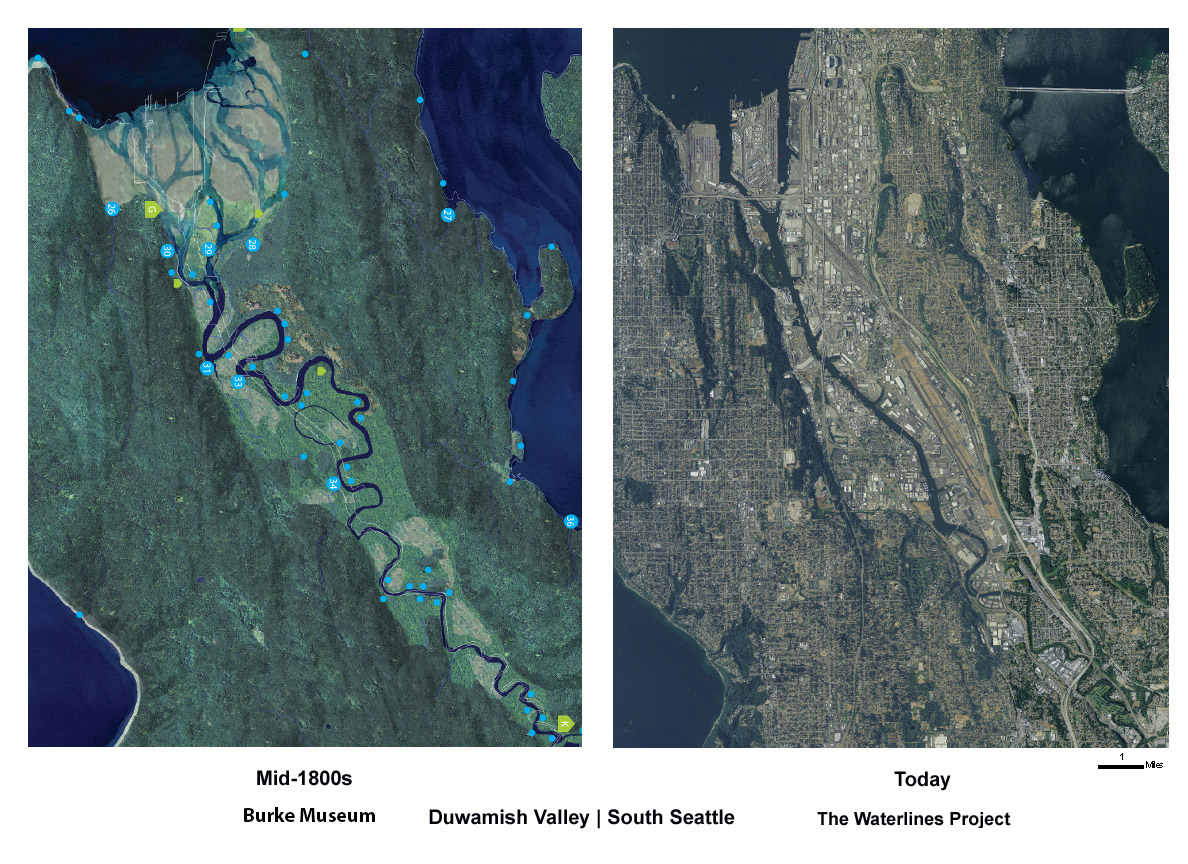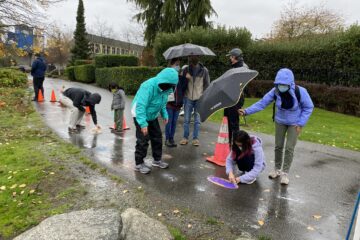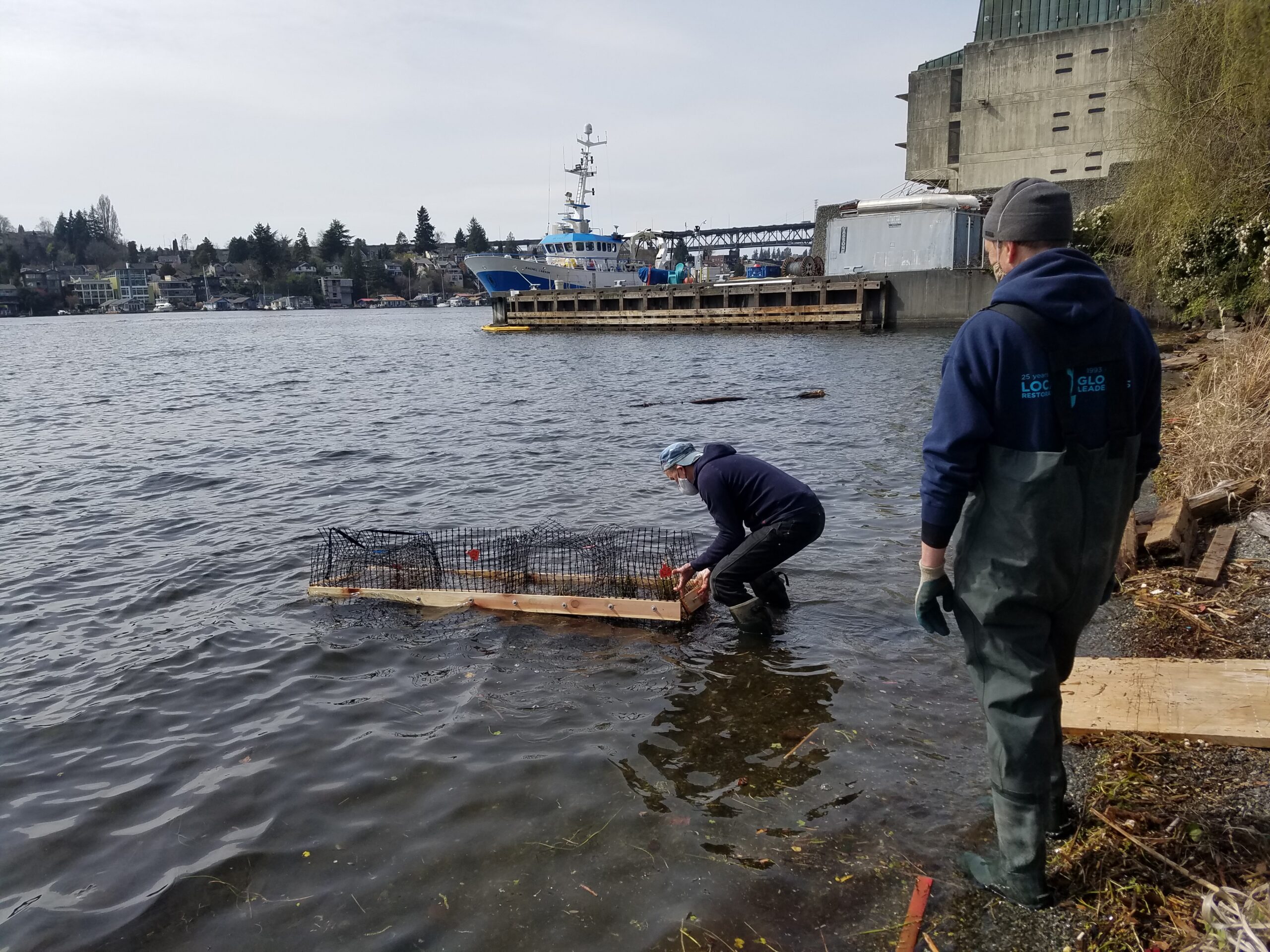Seattle includes over 200 miles of fresh and salt water shorelines, including Lake Washington, the Duwamish River and Elliot Bay. These waterbodies contribute to the ecological health and resiliency of Puget Sound and the Salish Sea but they have lost over 97% of their historic nearshore wetlands and riparian habitats. These habitats provided critical feeding refuges for juvenile Chinook, chum, coho, steelhead salmon and cutthroat trout before their ocean migration. Loss of these shoreline habitats reduces the survival of Chinook salmon which are the exclusive food for orcas of the Salish Sea. Providing these living shorelines for Chinook salmon is a critical action for saving orcas from extinction.
Historical shoreline vegetation has been lost through landscape alteration and urbanization, severely impacting habitat that migrating salmon and other native aquatic organisms require.
The conversion of the Duwamish River into an industrial waterway has left a legacy of chemical contamination that has resulted in its designation as a Federal Superfund site. American Rivers has identified Green-Duwamish River as the fourth most endangered river in America in 2019.
Despite the loss of natural habitats there are opportunities to reestablish living shorelines. Through innovative restoration projects and community commitment, we can offer new life to ecosystems lost to city growth. Healthier shorelines for the Duwamish, Lake Washington Basin and Puget Sound can support native insects, birds, fish and other life, and contribute the benefits these species provide to human well-being.


